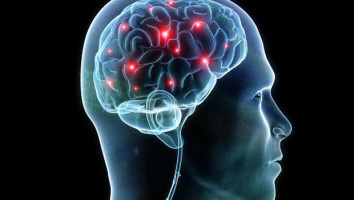
Researchers report in the journal Cancer Cell an experimental therapy that in laboratory tests on human cells and mouse models stops aggressive, treatment-resistant and deadly brain cancers called glioblastoma and high-grade gliomas.
Testing a multi-step therapeutic strategy, the scientists found a way to use a gene therapy to shut down a gene long-implicated in the formation of high-grade gliomas called Olig2.
The protein encoded by Olig2 is expressed in the majority of gliomas. Removing the Olig2 gene halts tumour growth, while elimination of Olig2-producing cells blocks tumour formation.
"We find that elimination of dividing Olig2-expressing cells blocks initiation and progression of glioma in animal models and further show that Olig2 is the molecular arbiter of genetic adaptability that makes high-grade gliomas aggressive and treatment resistant," said Qing Richard Lu, PhD, lead investigator and scientific director of the Brain Tumour Center at Cincinnati Children's. "By finding a way to inhibit Olig2 in tumour forming cells, we were able to change the tumour cells' makeup and sensitize them to targeted molecular treatment. This suggests a proof of principle for stratified therapy in distinct subtypes of malignant gliomas."
The current study may apply to high-grade brain gliomas and a fatal brainstem tumour called DIPG (Diffused Intrinsic Pontine Glioma), which expresses Olig2 and is inoperable because of its location in a brain region controlling vital functions.
Even if these cancers do initially respond to a specific targeted treatment, they adapt by finding genetic/molecular workarounds, evade treatment and continue growing.
Researchers caution the experimental therapeutic approach they describe requires extensive additional research and remains years away from possible clinical testing.
Still, Dr. Lu said the data are a significant research breakthrough.
The current study finds a potential chink in the molecular armour of these stubborn cancers that - even after an initial round of successful treatment - almost always relapse and kill the patients who get them.
The cancers form from precursors of supporting brain cells called oligodendrocytes, which help generate insulation for neural connections. Olig2 appears at the early stages of brain cell development.
Through extensive analysis of human brain cancer cells and mouse models, the researchers observed Olig2 expression in early-stage dividing and replicating cells in tumours.
Olig2 contributes to the transformation of normal precursor cells into abnormal malignant cells that divide uncontrollably.
In the context of cancer cell formation, the researchers saw Olig2 drive molecular processes that allow forming glioma cells to be highly adaptable and susceptible to the tumour-promoting effects of additional genetic changes.
Researchers then decided to eliminate Olig2-positive dividing cells during tumour formation.
To use an approach more rapidly translatable from the laboratory bench to clinical bedside, they successfully tested a gene therapy that uses an engineered herpes simplex virus (viral vector) to deliver a suicide gene into replicating Olig2-positive cancer cells.
They next administered an anti-herpes drug already in clinical use, ganciclovir (GCV). The Olig2-deleted tumours were not able to grow.
Researchers also found that after Olig2 was inhibited, the forming brain cancer cells switched directions and molecular composition- going from the cells resembling oligodendrocyte precursors to assume astrocyte-like brain cell characteristics.
They continued to form tumours, however these newly formed astrocyte-like brain cancer cells produce the epidermal growth factor receptor (EGFR) gene at high levels.
EGFR is a common and effective target for chemotherapy drugs used clinically to treat tumours such as breast cancers.
In repeated tests in mouse models, Olig2 inhibition prompted the glioma-forming cells to transform into EGFR-expressing astrocyte-like cells.
Then, in subsequent and repeated testing on the transformed human and mouse model astrocyte-like cancer cells, the researchers treated the cells with an EGFR-targeted chemotherapy drug called gefitinib.
The treatment stopped the growth of new tumour cells and tumour expansion.
Dr. Lu said that with additional testing, verification and refinement the experimental therapy could be especially helpful in preventing a recurrence of brain cancer in patients who have undergone an initial round of successful treatment.
He added the new treatment approach would likely be used in combination with other existing therapies like radiation, surgery, other chemotherapies and targeted molecular treatments.
The scientists continue their research with additional testing in human cell lines and "humanised" mouse models of high-grade glioma. The mouse models are engineered to grow brain tumours derived from the tumour cells of specific patients whose families have donated biopsy samples for research.
This allows researchers to test different targeted drugs in their therapeutic protocol that may best match the genetic makeup of tumours from specific individuals.
Source: Cancer Cell
We are an independent charity and are not backed by a large company or society. We raise every penny ourselves to improve the standards of cancer care through education. You can help us continue our work to address inequalities in cancer care by making a donation.
Any donation, however small, contributes directly towards the costs of creating and sharing free oncology education.
Together we can get better outcomes for patients by tackling global inequalities in access to the results of cancer research.
Thank you for your support.